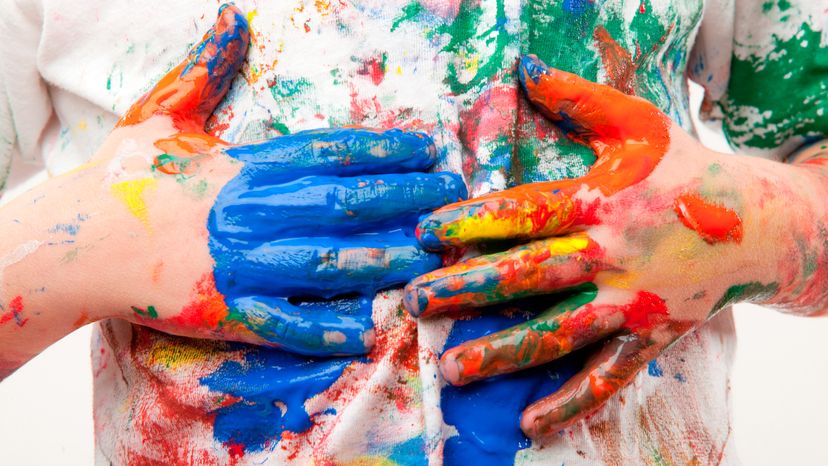
Whether done by a four-year-old or an established artist, a watercolor painting can add beautiful color to a room. Less attractive are the laundry stains watercolor paints can leave behind. Follow these tips to remove these pesky stains.
How to Remove Watercolor Paint Stains From:
Advertisement
Acetate, Carpet (synthetic or wool), Fiberglass, Rayon, Silk, Triacetate, Wool
Sponge (the method of using a dampened pad to apply light strokes, moving outward from the center of the stain) the area immediately with water to dilute the paint. Apply a wet spotter and a few drops of ammonia. (Take care when using ammonia on silk and wool.) Cover with an absorbent pad dampened with the wet spotter. Let the pad remain as long as any stain is being removed. Change the pad as it picks up the stain. Keep both the pad and stain moist with wet spotter and ammonia. Flush (the method of applying stain remover to loosen staining material and residue from stain removers) well with water and repeat if necessary. If, after drying, a stain persists, mix a little Rit Color Remover according to package directions. After testing on an inconspicuous place, flush it through the stain to an absorbent pad. On carpets, sponge the color remover on the stain and blot with an absorbent pad. Rinse well with water and dry.
How to Remove Watercolor Paint Stains From:
Acrylic Fabric, Cotton, Linen, Modacrylic, Nylon, Olefin, Polyester, Spandex
Soak item in a solution of 1 quart warm water, 1/2 teaspoon liquid detergent, and 1 tablespoon ammonia for 30 minutes. Rinse well. If stain persists, soak in a solution of 1 quart warm water and 1 tablespoon white vinegar for 1 hour. (Take care when using vinegar on cotton and linen.) Rinse well with water and allow to dry. If stain is set, apply rubbing alcohol (dilute with 2 parts water for acrylic and modacrylic) to the area and tamp (the method of bringing a brush down with light strokes on stained durable fabrics and materials). As stain loosens, blot excess liquid and stain with an absorbent pad. Keep both stain and pad moist with alcohol and change pad as it picks up the stain. Allow to dry. As a last resort for any remaining traces, mix Rit Color Remover according to package directions and test on a hidden place. If safe to use, flush through the stain. Rinse well with clear water and allow to dry thoroughly.
Advertisement